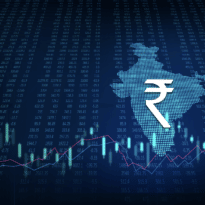This week’s Investment Soundbite Q&A from FundCalibre is with Jochen Breuer, manager of the Elite rated Fidelity Asian Dividend fund, who tells us more about the ripe dividend landscape in the region and discusses investment opportunities ranging from technology to insurance.
(Recorded 2 May 2023)
How do you go about finding the companies that fit the fund’s aim to provide cross-cycle performance?
When I took over stewardship of the fund around six and a half years ago, we set out to achieve three key outcomes for our clients. The first being outperformance of the index through the cycle. Secondly, to deliver an attractive headline dividend yield, which at the moment is around 4% on the fund, and dividend growth over time. And thirdly, to achieve this with lower risk characteristics than the market and with that, I mean a relatively lower drawdown in falling markets. The focus is really to deliver an attractive risk-adjusted total return, where the dividend is an important part of that total return over time. The fund itself is fairly concentrated in nature, so around 30 to 50, and it is managed without any reference to the benchmark. The average holding period of the companies we own is three to four years ,so it’s a very patient approach to investing.
The fund does exhibit certain style characteristics, as one would expect for a dividend strategy such as ours. Because of the type of companies we invest in and our focus on downside protection through the focus on valuation, the fund tends to behave more defensively and so, it tends to outperform in falling markets, but it lags in strongly rising markets. For example, 2020 was a difficult year for us, as sectors such as Chinese internet companies strongly outperformed and those tend to pay limited dividends and therefore are not really featured much in our investible universe. But we managed to recover the performance and more in 2021 and 2022.
Our investment approach is very much bottom-up focused, and we have more than 50 analysts here on the ground in Asia who are constantly meeting and analysing companies. With their help and through strong stock picking, we can hopefully [continue to] deliver against those three outcomes, which have been delivered over the last six and a half years.
There are a number of characteristics I would highlight in the companies we look for, the first being that the companies we invest in tend to have strong business models and therefore can generate attractive and resilience through-cycle returns. They tend to have conservatively managed balance sheets and good cash generation, and we are looking for good governance frameworks. On top of that, we are also looking for management teams that have shown good capital allocation in their businesses, where the dividend is an important part of that capital allocation framework. And management that manage these companies in a sustainable manner.
The final point I would make is on valuation. It’s not about quality at any price, but we’re very valuation conscious, and the focus is really on protecting the downside to achieve attractive risk-adjusted returns for our fundholders.
What is your view on technology today – is it still cyclical or defensive?
Technology stocks are around 18% of the fund today, but we have been adding to those holdings over the last few months. And I would classify that part of the portfolio certainly more within the cyclical bucket within the portfolio. And if we go back and think about what has happened, the wider technology space benefited from increased customer demand during Covid while supply chains were impacted, and therefore we’ve seen those disruptions, but really over the last 12 months some of those trends have reversed. So, while supply chain issues have largely been resolved I would say, demand, for example, for PCs, notebooks and mobile phones has weakened, and hence we have seen inventory levels of components and also of end products increase.
But I think crucially, we believe that we are past the worst here, and have, for example, started to see those inventory levels starting to come down. And hence we think from a cyclical backdrop, this is supportive and at the same time valuations for a lot of these hardware technology names, which are really leaders in the industry here in Asia, those names look attractive.
And if I could maybe talk about one stock that we like, it would be Samsung Electronics [Group]. Many will probably know Samsung’s consumer products such as TVs or fridges, but by far the biggest profit contributor is Samsung’s memory division, in particular d-ram memory, which goes into notebooks, mobile phones, servers and so on.
So, why do we like Samsung? I guess the first point would be from a structural perspective. ‘Memory’ is an industry that has consolidated over time. And today there are really only three scale players left in the industry in the form of Samsung Electronics and SK hynix [Inc.] in Korea, and then you have Micron [Technology, Inc.] in the US. And that makes for a much, much more rational market than used to be the case. And I think we are seeing that playing out right now. So, as a result of the weakness in demand that I talked about and the depressed profitability, these three industry players have now started to reduce capacity utilisation and capacity expansions. And we think this is really the last step that is required for an ultimate kind of cyclical recovery in that industry.
And Samsung – coming back to your point about cyclical versus defensive – we think Samsung is in a very good position to weather the storm here, as it’s really the lowest cost producer within the industry and it also has a very strong balance sheet. In fact, almost a quarter of its market cap is currently sitting in cash. And for an income investor like myself, what’s important really is that they have an absolute dividend policy. So, despite the cyclical weakness, they’re paying a stable dividend, and that obviously is very important for me as an investor. And lastly, and I think I mentioned it before, is really on valuations, which we think are very attractive and provide a very positive risk/reward profile for the stock.
Have the banking issues that have been reverberating in the US and Europe, been felt in Asia?
Financials are roughly 20% of the fund. But when looking at the exposure within that, one thing that I would highlight is that, historically and also today, the majority of our holdings are non-bank financials. These would be, for example, leasing companies, exchanges, or also selective insurers that we like. Why do we prefer those type of companies over banks? Really the reason is that they tend to operate in attractive niches of the market, which have less competition and therefore the potential to grow faster and generate very attractive returns on capital.
An example of such a company would be Chailease Holding Co., Ltd. in Taiwan, which provides leasing companies for SMEs in Taiwan, in China, and also in Southeast Asia. And this is a market that’s not really being served by the large banks as the business model is too specialised and too labour intensive for those larger banks to compete. And as a result, Chailease can generate attractive returns and grow at very decent rates.
The first thing I’d say is that those issues that we’ve seen in the regional banks in the US and also around Credit Suisse in Europe, have really only limited read across for Asian banks, the reason being that most banks in Asia have very strong capital positions. They are subject to strong regulation. Plus, they have a very large stable deposit franchise in most cases. There are obviously other drawbacks, such as the fact that a large part of the banking universe in Asia are state-owned enterprises and hence not necessarily only managed for the benefit of minority shareholders. And this is why we are very selective when investing in banks in the region.
The one bank that we have been adding over the last few months is HSBC, and there are a number of characteristics that we like here. The first being the restructuring of the business that management has done over the last few years, selling a number of underperforming non-core assets and geographies, which we believe will lead to stronger and improved return profiles of the group. And because of those restructurings, the other thing is that Asia now is more than 50% of the business and it’s obviously a higher growth market. And lastly, I would say the capital position attracts us, which is very strong and allows management to return significant funds to shareholders through dividends and buybacks. In fact, they announced a 2bn US dollar buyback today. And we believe 30% of the current market capitalisation will come back to shareholders over the next three to four years.
What’s your outlook for dividends for the rest of 2023 and beyond that?
One aspect that makes Asia an attractive hunting ground for income investors really is that it offers attractive headline yields, but it also has good prospects for dividend growth over time. And, on the one hand side, for example, you have countries such as Australia or Taiwan, which are more mature in nature and also have certain tax advantages or tax incentives for companies to pay higher dividends. But on the other hand, you have some of those more emerging markets where payout ratios are still relatively low, and you should see higher dividend growth over time from the companies operating in those countries.
Another aspect I think we have seen over time is that different governments have encouraged companies to return more cash to shareholders. And that is something we definitely are seeing at the moment with respect to the Chinese state-owned enterprises.
When I look at the fund and the dividend announcements of the companies in the fund year to date, I would broadly say that they have been in line to slightly better than expected. And I think that reflects really the improving fundamentals in Asia with the Chinese reopening, and which also results in higher confidence of management teams. As an example, Swire Pacific Ltd is a top five holding in the fund and they not only decided to initiate a sizable share buyback program of funds a few months ago, but also increased their dividend by around 15%. And we believe there’s ample room for more dividend growth going forward as the business recovers.
Singapore Exchange Ltd has been a holding for a number of years and falls into the ‘non-bank financials’ bucket. We think exchanges are attractive businesses because they tend to have very strong business modes in the form of certain network effects, as clients tend to choose the highest liquidity pools and the lowest cost operators to execute their trades. And Singapore Exchange in particular has very dominant positions in a number of derivative and foreign exchange products within the region. Another reason we like it is that it’s a business that generates high margins, is fairly capital light in nature and therefore generates a significant amount of cash. And this allows management to grow the business at attractive rates and, at the same time, return cash back to shareholders in the form of dividends.
Another maybe a little bit more underappreciated aspect we think, is that the exchanges benefit from rising interest rates, as they can invest the flow that they keep for their clients at higher rates in the current environment. And finally, from a portfolio perspective, I think what’s also interesting is that the exchanges tend to benefit from increased market volatility. So, it’s also a very attractive stock to own from a portfolio diversification benefit perspective, as it makes an attractive defensive holding within the fund.
Listen to the full interview here:
[Main image: z-TrhLCn1abMU-unsplash]































